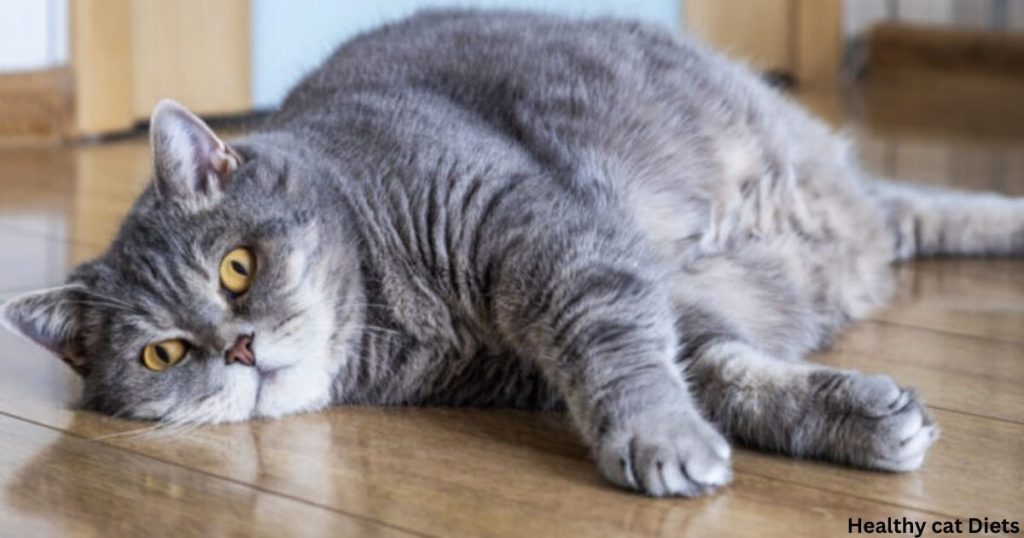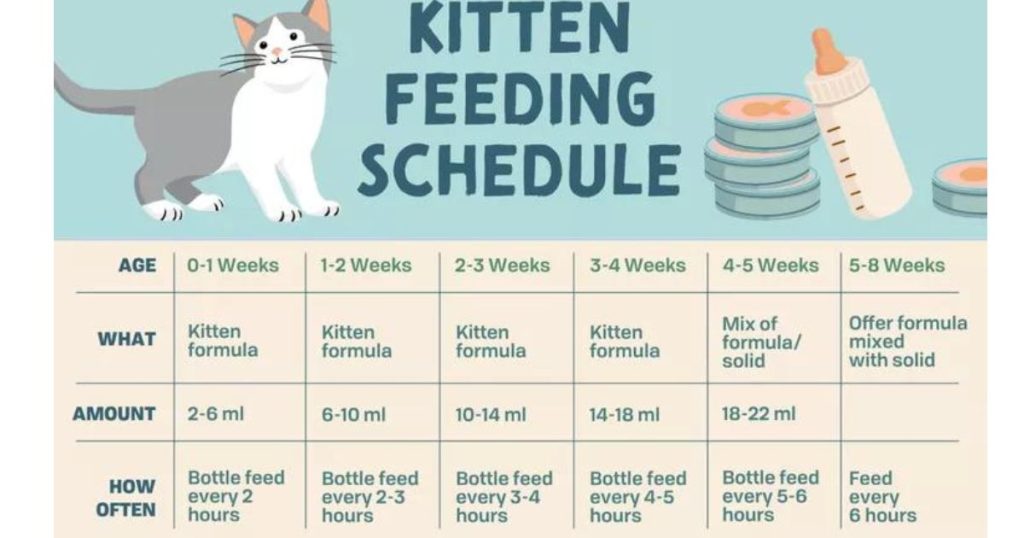How Much Food Should a Cat Eat? Understanding Feline Nutrition
Feeding your cat the right amount of food is essential for their overall health and well-being. Cats have specific dietary needs based on factors like age, weight, activity level, and medical conditions. Providing the correct amount of food ensures your cat maintains a healthy weight, receives the nutrients they need, and avoids common issues like obesity, malnutrition, or digestive problems.
Points:
- Cats need a balanced diet tailored to their unique needs.
- Proper food quantity helps maintain a healthy weight.
- Avoids health issues like obesity and malnutrition.
Understanding feline nutrition involves balancing macronutrients such as protein, fat, and carbohydrates. Cats are obligate carnivores, meaning their diet should be rich in animal-based proteins. The quantity of food your cat requires will vary depending on their lifestyle, but monitoring their weight and adjusting feeding portions accordingly will help keep them in top shape.
Points:
- Cats need a diet high in animal-based proteins.
- Food quantity depends on lifestyle and activity level.
- Regular weight monitoring helps adjust food portions.
Importance of Proper Feeding for Cats
Why Feeding the Right Amount Matters
When you provide the correct amount of food, your cat benefits in several ways. Proper feeding supports your cat’s overall health, helps to maintain their weight, and ensures they get all the necessary nutrients for muscle growth, immune system strength, and energy levels. Feeding too little can lead to malnutrition, while overfeeding can cause obesity, which brings about additional health risks such as diabetes, heart disease, and arthritis.
Points:
- Correct food amount supports health and weight management.
- Provides essential nutrients for growth and energy.
- Prevents health issues related to malnutrition and obesity.
Long-Term Health Impact of Overfeeding or Underfeeding

Overfeeding a cat can cause long-term health issues, particularly obesity. Obesity is a leading cause of chronic diseases like diabetes, heart disease, and arthritis. Conversely, underfeeding can lead to malnutrition, which can cause weakness, a compromised immune system, and developmental problems, especially in kittens. Proper portion control and a balanced diet are crucial for avoiding these issues and ensuring your cat remains healthy throughout their life.
Points:
- Obesity from overfeeding leads to chronic diseases.
- Underfeeding can cause malnutrition and developmental issues.
- Balanced portions prevent long-term health problems.
How Much Dry Food Should a Cat Eat a Day?
General Guidelines for Dry Food Consumption
The amount of dry food a cat should eat daily varies based on their size, age, and activity level. Generally, a cat’s caloric needs are calculated based on their weight and whether they are active or sedentary. For example, a typical indoor cat may need about 200-250 kcal per day. This amount can be adjusted based on specific factors like age, health condition, and metabolic rate. Consulting with your vet can help you determine the ideal daily portion.
Points:
- Daily food needs depend on size, age, and activity.
- Average indoor cat needs about 200-250 kcal/day.
- Adjust portions based on individual factors and vet advice.
Understanding Caloric Density in Dry Food
Dry food’s caloric density plays a crucial role in determining how much to feed your cat. Different brands and formulations of dry food have varying calorie counts per cup or ounce. For instance, some may have higher protein and fat content, leading to more calories per serving. Checking the packaging for caloric information and adjusting the portion size accordingly will help you meet your cat’s dietary needs without overfeeding.
Points:
- Caloric density varies among dry food brands.
- Check packaging for calorie information.
- Adjust portion sizes based on caloric density.
How Much Food Should a Cat Eat Calculator?
Using a Cat Feeding Calculator for Accuracy
A cat feeding calculator is a useful tool for determining the precise amount of food your cat needs. These calculators take into account various factors such as your cat’s weight, age, activity level, and health status. By inputting these details, the calculator provides a tailored recommendation for daily calorie intake, which helps you avoid guesswork and ensure your cat is fed appropriately.
Points:
- Feeding calculators consider weight, age, and activity.
- Provides tailored recommendations for daily intake.
- Helps in accurate portion control.
Calculating Calories and Converting to Portions
Once you have the daily calorie recommendation from the feeding calculator, converting this into actual food portions is the next step. This involves checking the calorie content of the food you are using and calculating how much to serve to meet the recommended caloric intake. For instance, if your cat needs 300 kcal/day and your food provides 100 kcal per cup, you would serve 3 cups daily. Adjust for any special needs, such as weight loss or gain.
Points:
- Convert daily calorie needs into food portions.
- Check food labels for caloric content.
- Adjust portions based on specific dietary needs.
Cat Feeding Guide: Wet and Dry Food
Combining Wet and Dry Food for a Balanced Diet
Combining wet and dry food can offer a balanced diet for your cat. Wet food provides additional moisture, which is beneficial for hydration and urinary health. Dry food can help with dental health due to its crunchy texture. A common approach is to feed a mix of both types, with some owners choosing a ratio of 50% wet to 50% dry food or adjusting based on their cat’s preferences and health needs.
Points:
- Wet food adds moisture and benefits hydration.
- Dry food aids dental health with a crunchy texture.
- Mixing both types can offer a balanced diet.
Pros and Cons of Wet Food vs. Dry Food
Wet food often contains higher protein and moisture content, which can be advantageous for cats with urinary issues or those who need more hydration. However, it tends to be more expensive and can spoil quickly if left out. Dry food, on the other hand, is more convenient, less expensive, and has a longer shelf life. Understanding the pros and cons of each can help you decide the best feeding approach for your cat.
Points:
- Wet food has higher protein and moisture.
- Dry food is convenient and cost-effective.
- Balance between both types depends on your cat’s needs.
How Much to Feed a Cat Chart
Detailed Caloric Intake Chart by Weight and Health Condition
To help you determine how much to feed your cat, here is a detailed caloric intake chart based on weight and health condition:
| Cat Weight | Spayed/Neutered | Intact | Healthy Cat, Prone to Obesity | In Need of Weight Loss |
| 5lbs | 125 kcal/day | 175 kcal/day | 100 kcal/day | 75 kcal/day |
| 8lbs | 200 kcal/day | 280 kcal/day | 160 kcal/day | 120 kcal/day |
| 10lbs | 250 kcal/day | 350 kcal/day | 200 kcal/day | 150 kcal/day |
| 12lbs | 300 kcal/day | 420 kcal/day | 240 kcal/day | 180 kcal/day |
| 15lbs | 375 kcal/day | 525 kcal/day | 300 kcal/day | 225 kcal/day |
| 18lbs | 450 kcal/day | 630 kcal/day | 360 kcal/day | 270 kcal/day |
| 20lbs | 500 kcal/day | 700 kcal/day | 400 kcal/day | 300 kcal/day |
This chart breaks down the daily caloric needs based on your cat’s weight, whether they are spayed/neutered or intact, and their health condition. Use this chart to determine the appropriate amount of food to feed your cat to ensure they stay healthy and maintain a proper weight.
Points:
- Chart provides caloric needs based on weight and health.
- Adjustments for spayed/neutered and health conditions.
- Helps in effective diet management.
You Also Like It:
How Much Food Should I Feed My Cat
Tips for Maintaining a Healthy Feeding Routine for Cats

How Often Should You Feed Your Cat?
Deciding how often to feed your cat involves choosing between free feeding and scheduled meals. Free feeding allows your cat to eat at their own pace throughout the day, while scheduled feeding provides meals at set times. Many cat owners prefer scheduled feeding to regulate portions and avoid overeating. Typically, feeding twice a day works well for most cats, but you should consider your cat’s specific needs and habits.
Points:
- Free feeding vs. scheduled meals.
- Scheduled feeding helps control portions.
- Twice-a-day feeding is common for many cats.
Adjusting Food Based on Your Cat’s Lifestyle
Adjusting your cat’s food intake based on their lifestyle is crucial. Active cats, such as those that go outdoors frequently, may need more food compared to sedentary indoor cats. Seasonal changes, like colder weather, can also affect your cat’s calorie needs. Regularly assess your cat’s activity level and adjust their food portions accordingly to maintain a healthy weight and overall well-being.
Points:
- Active cats need more food than sedentary ones.
- Seasonal changes can impact calorie needs.
- Regular assessment helps maintain a healthy weight.